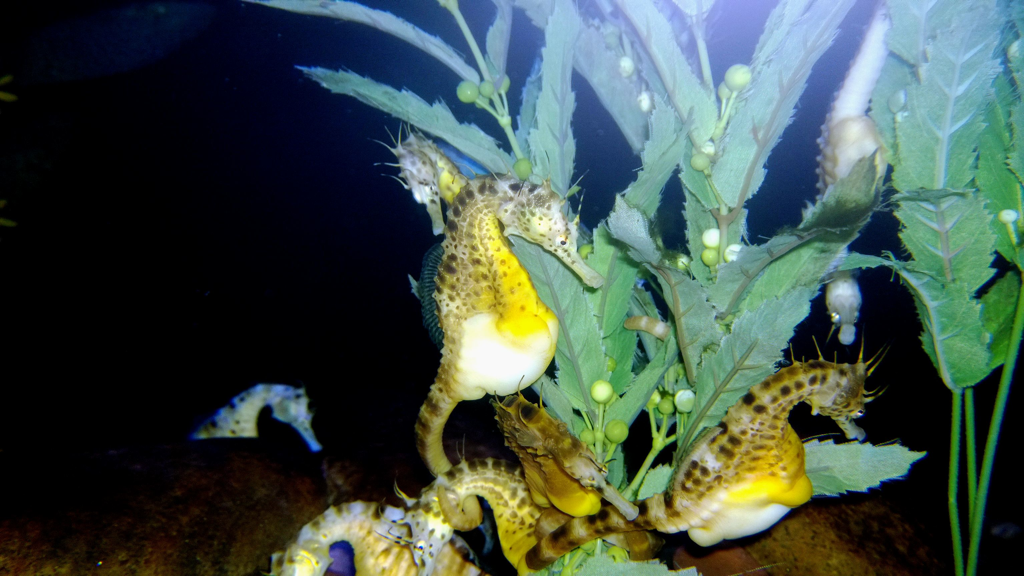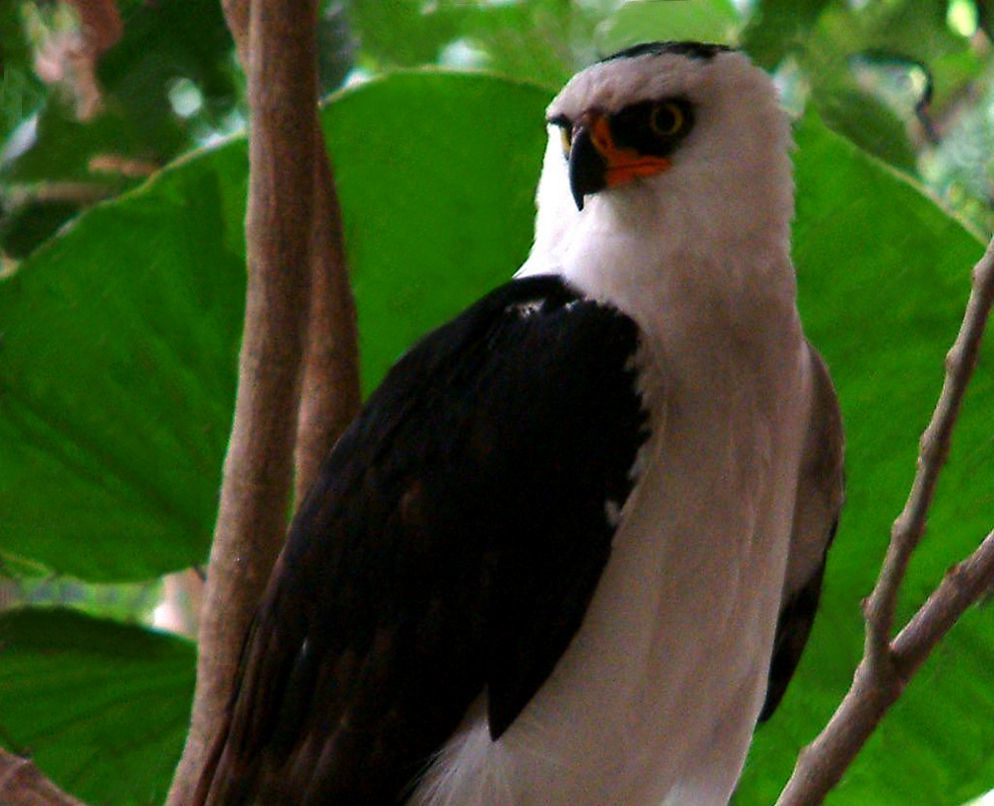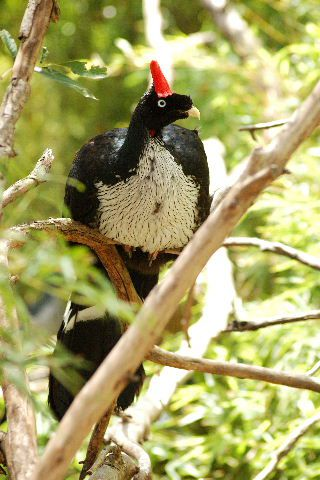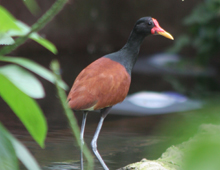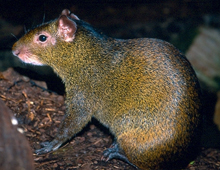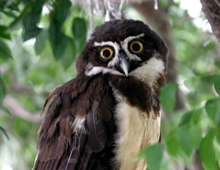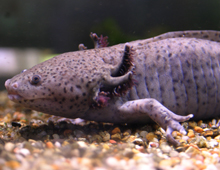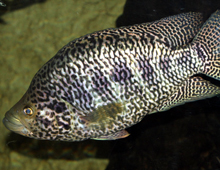
As the name implies, Chestnut-eared aracaris have a chestnut coloring around the throat and ears. The head is black and the back and tail dark green to almost black. Their undersides are yellow with a red band and rump. Their dark brown hooked beaks have a yellow-orange stripe along the bottom of the upper mandible. The serrated edge of the upper mandible is prominent. The whitish eyes are surrounded by grayish-blue facial skin. The feet and legs are yellowish-green. Sexes are somewhat similar but the female has more brown on the head, shorter bill and the black area on lower throat is not as wide.

